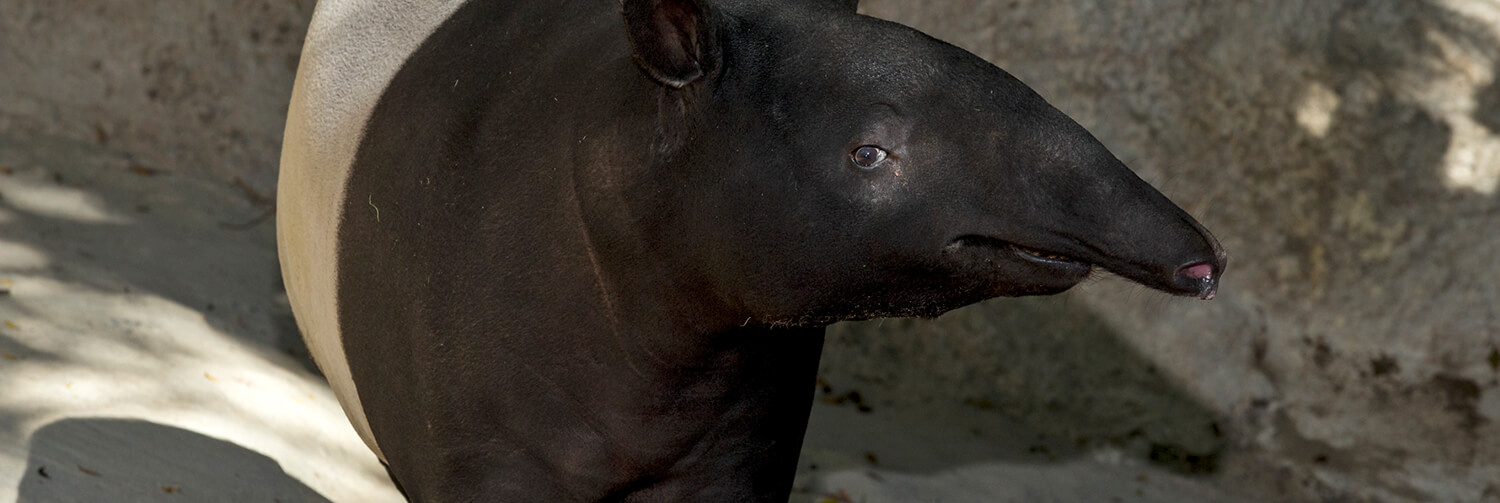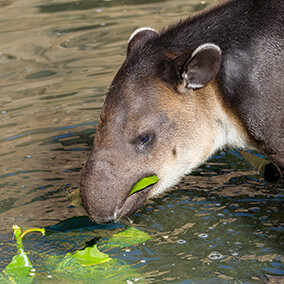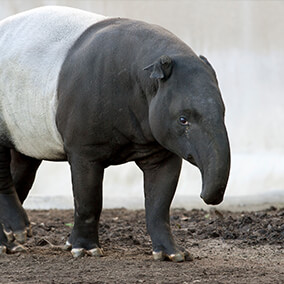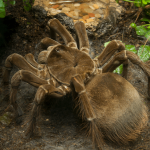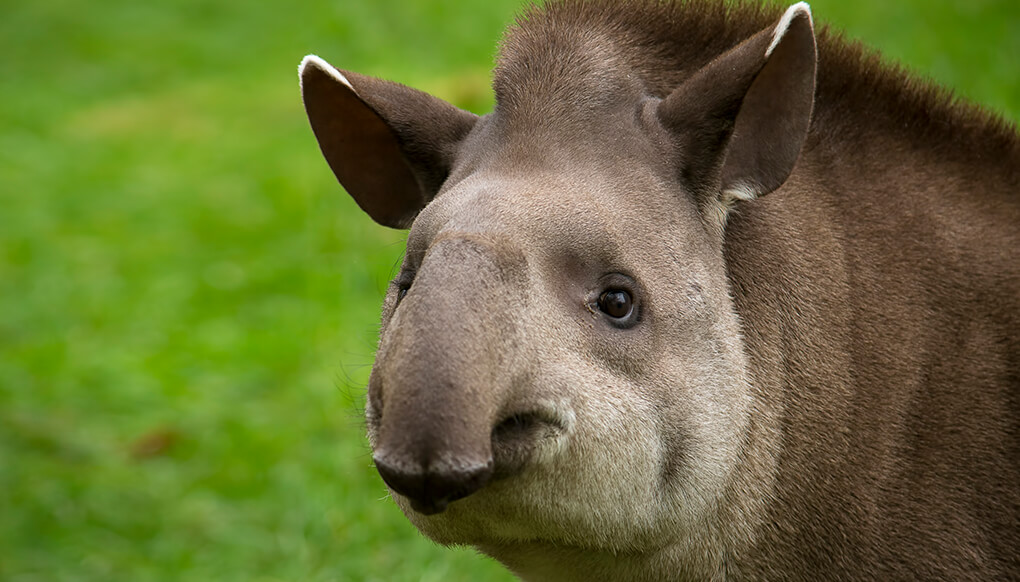
Tapir

Mammals


Some Endangered
facts



description
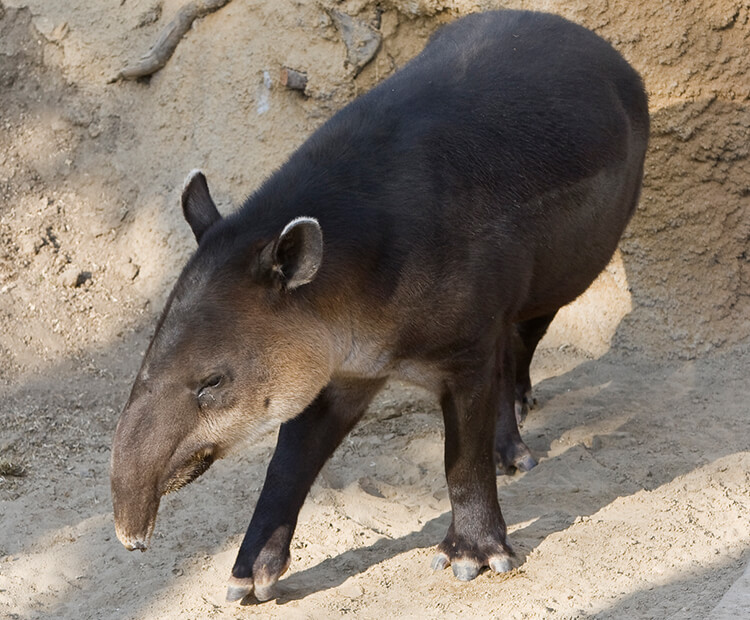
Ancient animals
They may look odd at first, but tapirs have adaptations that have helped them survive on Earth for a very long time. They are primitive animals that have remained unchanged for millions of years. Fossils of tapir ancestors have been found on every continent except Antarctica. Present-day tapirs, depending on species, can be found in Mexico, Central America, South America, and Asia.
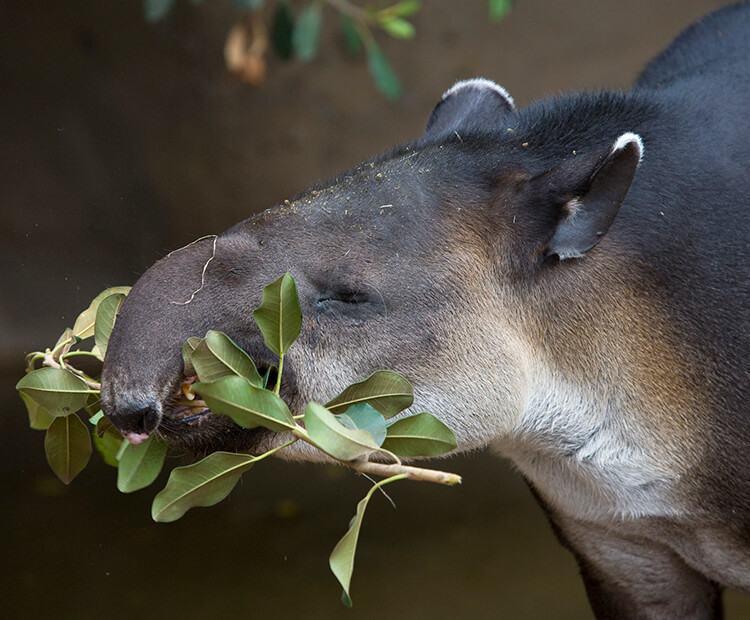
Not a pig
People often think a tapir is a kind of pig or anteater, but it is actually most closely related to horses and rhinos. Its nose and upper lip are combined into a flexible snout that the animal uses to reach and pull food into its mouth. A tapir is both a browser and a grazer! It uses its snout to pluck leaves from tree branches or to feel around in the underbrush for fallen fruit to eat.
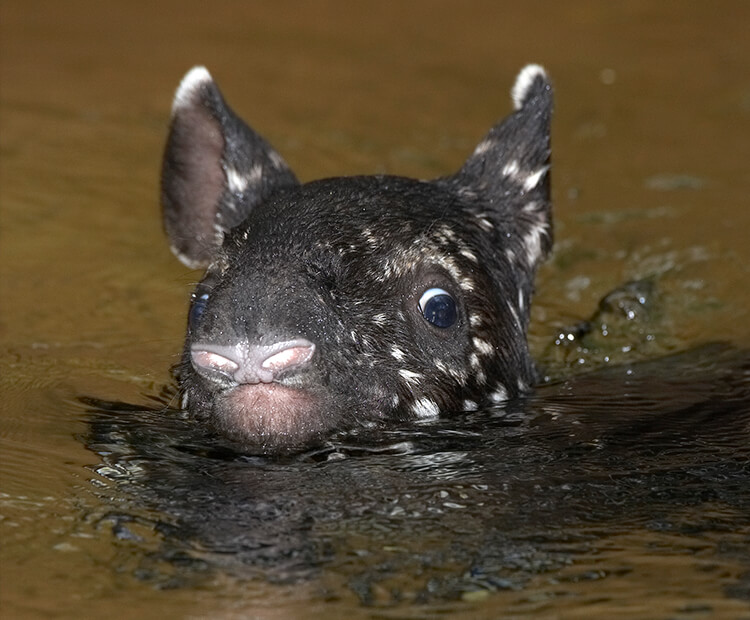
Water wise
Tapirs are nocturnal animals that like to spend a lot of time in the water. They can stay under the water for several minutes. In fact, when frightened, tapirs hide in the water and breathe with their snout poked above the surface like a snorkel!

